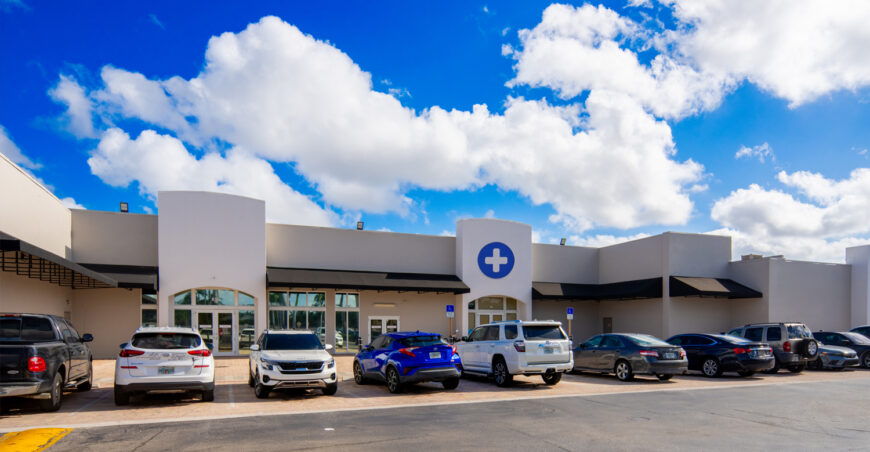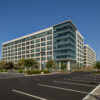The retail real estate landscape is transforming, medical tenants are filing vacancies of older strip malls and mid-tier shopping centers. As traditional retailers consolidate or shift online, retail centers – particularly older strip malls and mid-tier shopping centers are facing higher vacancy rates and the need to rethink their tenant mix. In this new era, medical tenants have emerged as key players in reshaping these spaces.
From urgent care clinics and dental offices to physical therapy centers and specialized outpatient providers, healthcare businesses are increasingly turning to retail properties to grow their footprint. This shift is changing the face of retail real estate and offering landlords, developers, and investors fresh opportunities for long-term stability and value creation.
Why Medical Tenants Are Filling Vacancies At Retail Spaces
There are several reasons why medical tenants are gravitating toward retail settings:
1. Prime Locations and Visibility
Retail centers typically enjoy high visibility and accessibility, with locations along major roadways and close to residential communities. For healthcare providers, being easily seen and accessed by patients is a major advantage. These prime locations help support patient acquisition and retention – critical factors for practice growth.
In contrast to medical office buildings tucked away in business parks or behind gated entrances, retail centers offer direct, drive-up access and recognizable storefronts. This visibility is particularly beneficial for new or expanding practices aiming to establish a local presence.
2. Consumer Convenience
Today’s patients prioritize convenience. Visiting a clinic in the same center where they can grab a coffee, pick up groceries, or run errands fits seamlessly into daily routines. The integration of healthcare into consumer spaces is a natural extension of this mindset.
Retail centers also tend to offer ample surface parking and ADA-accessible entrances – features that enhance the overall patient experience, particularly for elderly or mobility-challenged individuals.
3. Flexible Space Options and Competitive Lease Terms
Many retail spaces come with open floor plans that allow for flexible buildouts to accommodate medical requirements. This adaptability, paired with competitive lease terms, makes retail an appealing option for healthcare providers.
Landlords eager to backfill vacancies are often willing to offer tenant improvement allowances or modify shell conditions to attract stable, long-term users like medical tenants. In many cases, it’s a win-win: medical groups get well-located, customizable space, while landlords gain reliable occupants.
Benefits for Landlords and Investors
Medical tenants offer significant advantages beyond just filling space:
1. Stability and Long-Term Commitments
Medical practices tend to sign longer leases, often seven to ten years or more, compared to traditional retailers. Their operations are capital-intensive, and once they establish a patient base, relocation is costly and disruptive. As a result, they’re more likely to remain in place long term.
This lease stability translates into consistent income for landlords and lower turnover-related expenses.
2. Increased Property Value
A well-known healthcare tenant can elevate a property’s profile and attract additional traffic to the center. For investors, having a mix of daily-needs tenants including medical users can improve the asset’s overall cap rate and long-term valuation. Know the ways to increase your property value here.
In addition, healthcare is generally considered a recession-resistant sector, making medical-anchored retail properties particularly attractive in uncertain economic climates.
3. Tenant Mix Diversification
A diverse tenant mix helps de-risk a retail center. By blending medical, service-based, and experiential tenants, landlords can reduce reliance on traditional retail, which is more susceptible to online competition and market shifts.
Healthcare tenants complement other essential services like pharmacies, fitness centers, and quick-service restaurants, enhancing the center’s relevance to the community.
Considerations for Landlords
Of course, incorporating medical tenants into retail centers isn’t without its considerations:
- Zoning & Permitting: Some cities may require a zoning change or conditional use permit to allow medical use, depending on the procedures performed.
- Build-Out Requirements: Medical tenants may need specific infrastructure like additional plumbing, upgraded HVAC systems, and backup power for medical equipment.
- Parking Ratios: Depending on the size of the practice, a medical tenant may require higher parking ratios than a typical retailer.
Still, with thoughtful planning and the right partnerships, these hurdles are manageable, and the payoff is substantial.
Let the ICRE Investment Team Help You Navigate the Opportunity
At ICRE Investment Team, we specialize in helping owners, investors, and medical users identify and execute commercial real estate strategies that work in today’s changing market. Whether you’re looking to lease vacant retail space to medical tenants, purchase an income-producing medical-anchored asset, or find the right site for your growing healthcare practice, our team has the experience and market insight to guide you.
We’ve worked with national healthcare brands, regional medical groups, and local practitioners to secure locations that support long-term success. From strategic site selection and deal structuring to marketing and lease negotiations, our full-service approach ensures your investment performs.
The retail landscape may be evolving but with the right tenants and the right team, there’s more opportunity than ever.
Ready to explore how medical tenants can transform your retail assets? Let’s talk. Contact the ICRE Investment Team today.
















